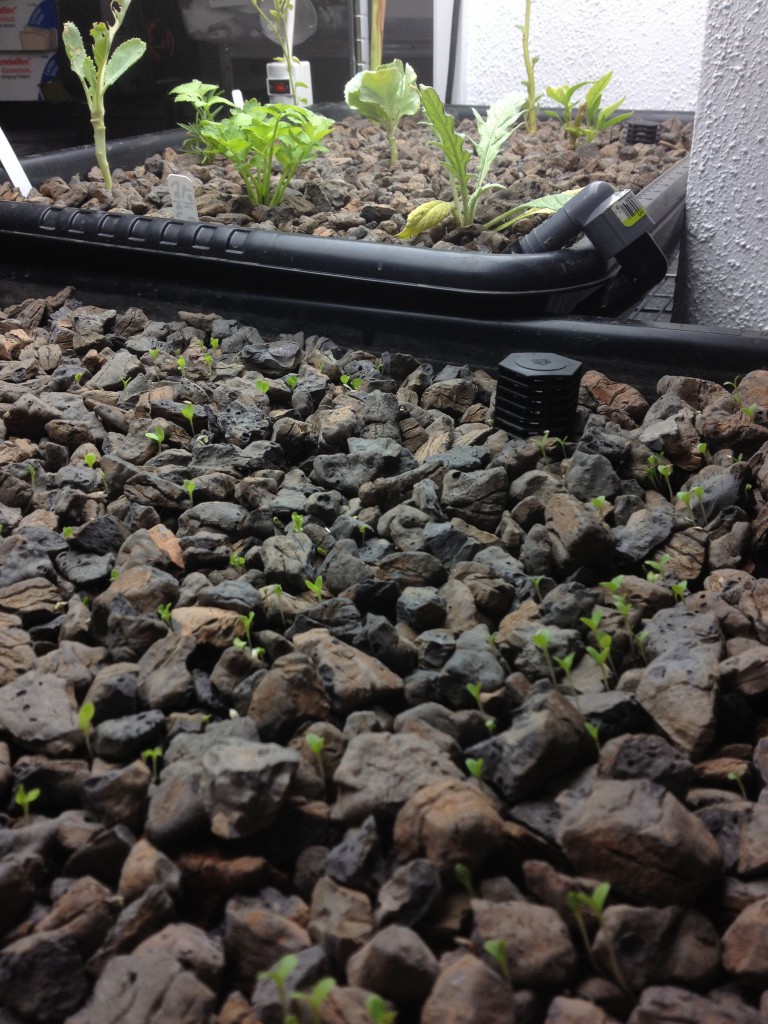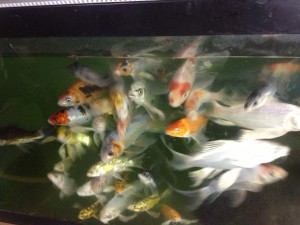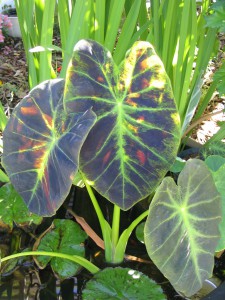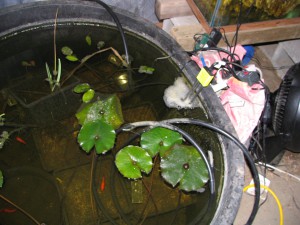Large tanks for aquaponics are expensive. Constructing tanks for fish is a lot of work and the lining is pricey. Plastic tanks over a hundred gallons or so get expensive fast. I started collecting large stock tanks off Craigslist, and even managed to buy a few of the IBC containers that are so popular on the Aquaponics websites.
Ultimately I want to build a large system and capitalize on the stability of larger bodies of water and the economies of scale. I would like to combine this with my other greenhouse work, reaching out the community and providing unusual opportunities and crops. But first I needed to know what I’m doing.

Distractions and false starts aside, I finally built a small closed system in my indoor office in 2013 so that I could study the dynamics of the system. I incorporated NFT (nutrient film technique, utilizing water running down narrow channels to feed small net pots of plants) and two flood and drain grow beds. These lived on two shelves of a large wire shelving unit, with grow lights above them and the 40 gallon fish tank on the bottom. A couple dozen small koi were stocked and I’ve tried growing various things in the system with mixed success. Which is great, because I learned a lot from every failure.

This system was still running while I setup my new system last year. The fish were up to 12″ long, and they went into a greenhouse sump for the winter. They will grace an outdoor display pond in the coming months. Meanwhile, I’ve been operating test aquaponics system two, a slightly larger 700 gallon setup in the dome greenhouse.



